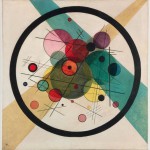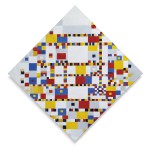Abstract art is often referred to as non-representational art. This is because such art departs from the once standard assumption that art represents the real world of people (and other creatures), places, and things. But beginning in the early twentieth century, artists began to make paintings that did not represent easily identified things. The paintings in this unit are all examples of such abstract art. After you look at and discuss the paintings, the philosophy unit will raise issues about what it is for something to be abstract.
Start: Abstract Art Exploration →
Select a piece from below to pick up where you left off.


